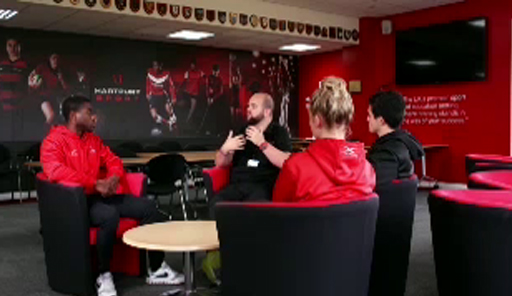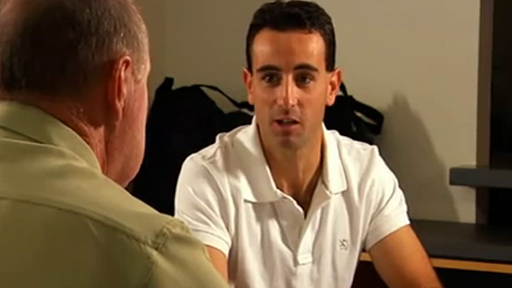1 Why ask questions?
Those who support coaches are often encouraged to use questioning as part of their approach (e.g. Kidman, 2005). Research also suggests that those who are coached this way – through questioning rather than just ‘being told’ – display greater performance gains and take more responsibility for and awareness of their learning (e.g. Chambers and Vickers, 2006).

There are at least two dimensions to asking good questions. First of all, what type of question should you pose and secondly, how should you frame and ask the question? Combining these two aspects influences how a coach ‘hears’ your questions and responds to them. In the first activity you are going to watch two different people use questions in different environments to see how questions can be used to very different effect.
Activity 1 The use of questioning to support learning
Watch the two short videos below which show how questioning is used to encourage reflection on practice. It’s possible that the presence of cameras influences the exchanges, as well as any differences there may be in ways of working between higher education (Video 1) and referee training (Video 2). However, despite this the contrast between approaches is fascinating.
While watching, make brief notes on the following questions:
- Which word is used most frequently to open questions – for example, ‘how’ or ‘what’? Are any other words used?
- Of the conversations in the videos, roughly how much of the time is taken up by the coach developer talking, and how much by the trainee? For example, in Video 1 you might estimate that the coach talks twenty per cent of the time, and the coach developer eighty per cent.
- How are the questions delivered, and in what manner are they posed?

Transcript: Video 1 (Higher Education). This clip features Thomas Legge (Senior Lecturer) at Hartbury University.
[MUSIC PLAYING]
[MUSIC PLAYING]

Transcript: Video 2 (referee training). This is a different style clip, an Australian training film; it features a rugby referee receiving mentoring support.
Discussion
Here are some observations about the two videos, addressing the three questions.
Video 1 (Higher Education) – Legge uses ‘what’ as the most frequent word to open his questions, and he talks for about forty per cent of the time. He maintains a positive stance towards individuals throughout and his use of ‘I’m proud you have done that’ was a particularly powerful use of words.
Video 2 (referee training) – the person mentoring the referee uses a full range of question-starting words: ‘did you’, ‘what’, ‘when’, ‘how’, ‘tell me’, ‘why’. He only talks for about twenty per cent of the time. He makes evaluations of the referee’s practice from which advice and guidance are given, perhaps in a fairly authoritarian manner, for example ‘I want you to …’.
These two examples demonstrate how questions can be asked in different ways using different words as a starting point. The questions also invite a response, they invite reflection which the coach developer can respond to and create a dialogue. This dialogue can build and develop, initially it can be welcoming before moving on to addressing areas for improvement.
Now that you have seen examples of the ways in which questioning might be used in diverse environments, you will next consider some overarching principles to follow for good questioning.
